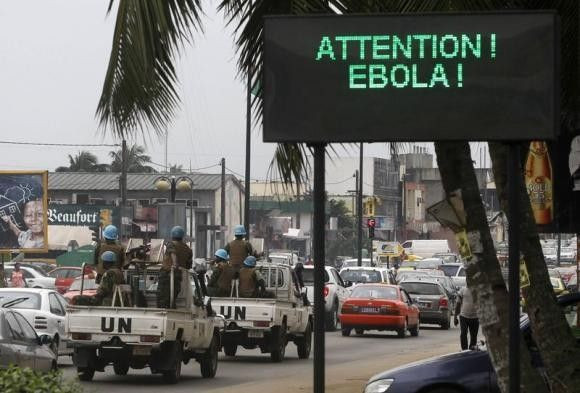Ebola Paper Has Found the Disease Transmission Rate: Indicates Ways by Which it Could be Curbed
If Cross Border Transmission Happens it Could Cause a Major Epidemic

A new research has analysed the transmission rates of Ebola in West African countries. Researchers from Arizona State University and the University of Tokyo looked into the speed at which the virus spreads from person to person.
Researchers found that on an average for every one new case there was another new case as a result of transmission and country specific analysis showed that the transmission rates were really high; One case contributing to two new cases only in Liberia and Sierra Leone. Researcher Hiroshi Nishiura of the University of Tokyo said that the analysis showed a continuous growth in the cases. Their analysis of the "reproduction numbers" from June to August 2014 indicated that it was a major epidemic. He further stated that if cross border transmission happens, it could affect other areas as well. He pointed towards Liberia where the transmission rates are high and said that as the virus reached this country it could reach other geographical areas causing a major epidemic. This however he said with regard to, "uncontrolled cross border transmission."
The statistical analysis present in the paper, "Early transmission dynamics of Ebola virus disease, West Africa, March to August 2014," found that the transmission rates had increased in Sierra Leone and Liberia from 1.4 to 1.7, from June to July respectively. The analysis is published in Eurosurveillance.
Researchers Gerardo Chowell-Puente, ASU School of Human Evolution and Social Change Associate Professor said that their research was essential as it indicated towards the ways in which this epidemic could be curbed. Chowell said that the findings suggest that control of the Ebola epidemic is possible by, "preventing more than half of the secondary transmissions for each primary case. This could be attained by isolating those with Ebola and tracing each case to its source."
This is the largest epidemic and first regional outbreak of Ebola in Africa. It began in December 2013 was identifies in March 2014 and it immediately garnered world attention, as it rapidly spread to neighbouring countries, taking several lives. The World Health Organization declared the epidemic a Public Health Emergency of International Concern in August.
"Characterizing the distribution of secondary cases from a single case can help healthcare workers and officials understand Ebola transmission dynamics over time," this he said would help understand and get a deeper insight into the effect of interventions to control spread of the disease.
Researchers analyzed all the cases in the World Health Organization data as of Aug. 26 and found that there were confirmed cases and probable cases. They also studied the reported cases that included confirmed, probable and suspected cases. Chowell said that the situation must be watched closely as the epidemic continues as this would help assess the status of the outbreak in real time, guiding towards the controlled interventions in the affected area.





















